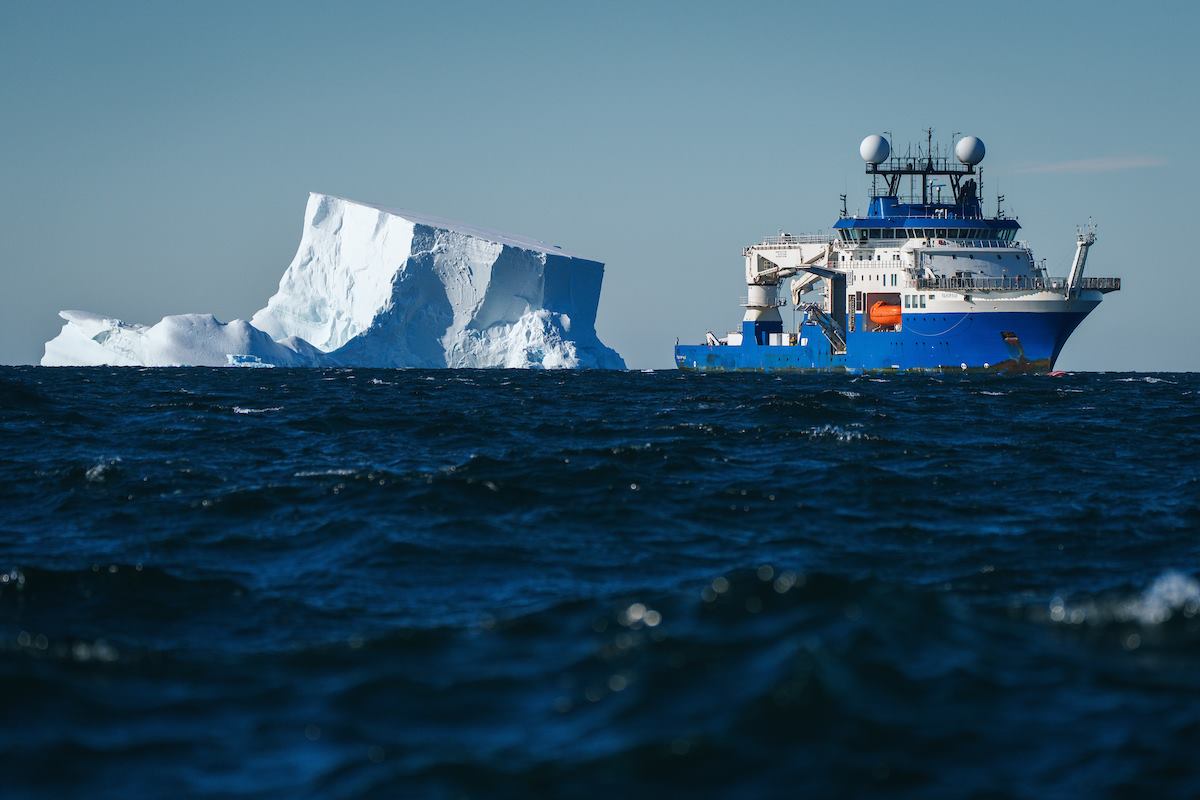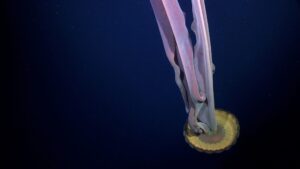Smile
Antarctic Iceberg Reveals Hidden World Teeming With Unique Life

Quick Smiles:
- An iceberg the size of Chicago broke away from Antarctica, unveiling a hidden world beneath.
- Researchers discovered a thriving ecosystem with unique species at depths of up to 3,900 feet.
- This unexpected find offers new insights into life beneath the ice, untouched for centuries.
A remarkable opportunity emerged when a colossal iceberg, comparable in size to Chicago, detached from Antarctica, revealing an unexplored underwater realm. Researchers aboard a scientific vessel swiftly adapted their plans to investigate this newfound world.
Dr. Patricia Esquete, the expedition’s co-chief scientist from the University of Aveiro, Portugal, stated,
“We seized upon the moment, changed our expedition plan, and went for it so we could look at what was happening in the depths below.”
This serendipitous event allowed the team to conduct the first oceanographical, biological, and geological study of the area in the Bellingshausen Sea. Using a remotely operated vehicle, they explored the seafloor for eight days, uncovering vibrant ecosystems at depths reaching 3,900 feet. These ecosystems featured large corals and sponges that supported diverse animal life, including icefish, giant sea spiders, and the rarely seen giant phantom jellyfish.
Dr. Esquete expressed her astonishment at the discovery:
“We didn’t expect to find such a beautiful, thriving ecosystem. Based on the size of the animals, the communities we observed have been there for decades, maybe even hundreds of years.”
The knowledge about life beneath Antarctica’s floating ice shelves remains limited. In 2021, researchers first noted signs of life under the Filchner-Ronne ice shelf. However, this expedition marked the first use of an ROV to explore these remote landscapes teeming with life.
The team was amazed by the significant biomass and biodiversity they encountered, observing species previously unseen outside the ice shelf. They even suspect that some of the biological samples collected may represent new species.
Typically, deep-sea ecosystems rely on nutrients descending from the surface. However, these Antarctic ecosystems have been isolated by nearly 500 feet of ice for centuries. The team hypothesizes that ocean currents might play a crucial role in sustaining life beneath the ice sheet by moving nutrients.
Dr. Jyotika Virmani, a leading scientist on the expedition, remarked,
“The science team was originally in this remote region to study the seafloor and ecosystem at the interface between ice and sea. Being right there when this iceberg calved from the ice shelf presented a rare scientific opportunity. Serendipitous moments are part of the excitement of research at sea – they offer the chance to be the first to witness the untouched beauty of our world.”
This incredible opportunity seized by science offers a glimpse into the wonders hidden beneath the ice, waiting to be shared with the world.


-

 Cute Animals1 year ago
Cute Animals1 year agoPuppy Love Patrol: Service Dog Swoons Over K9 Officer Neighbor
-

 Cute Animals2 years ago
Cute Animals2 years agoHugs, Hooves, and Happiness: Newborn Donkey Steals Hearts by Demanding Affection [Video]
-

 Cute Animals2 years ago
Cute Animals2 years agoWATCH: A German Shepherd’s Surprising Parenting Instinct for Lost Ducklings!
-

 Cute Animals2 years ago
Cute Animals2 years agoPetty Pup Pulls Off Hilarious Bone Heist [Video]
-

 Heroes2 years ago
Heroes2 years agoA Lost Dog’s Bark Leads to a Lifesaving Discovery
-

 Cute Animals2 years ago
Cute Animals2 years ago“Pure Love”: Adopted Rescue Dog Can’t Hide How Grateful He Is [Video]
-

 Cute Animals2 years ago
Cute Animals2 years agoTiny but Mighty: Cat with Dwarfism Becomes Internet Star as Owners Adapt Backyard for Her Comfort
-

 Cute Animals2 years ago
Cute Animals2 years agoAdorable Puppy Steals Hearts After a Tiring Swim [Video]